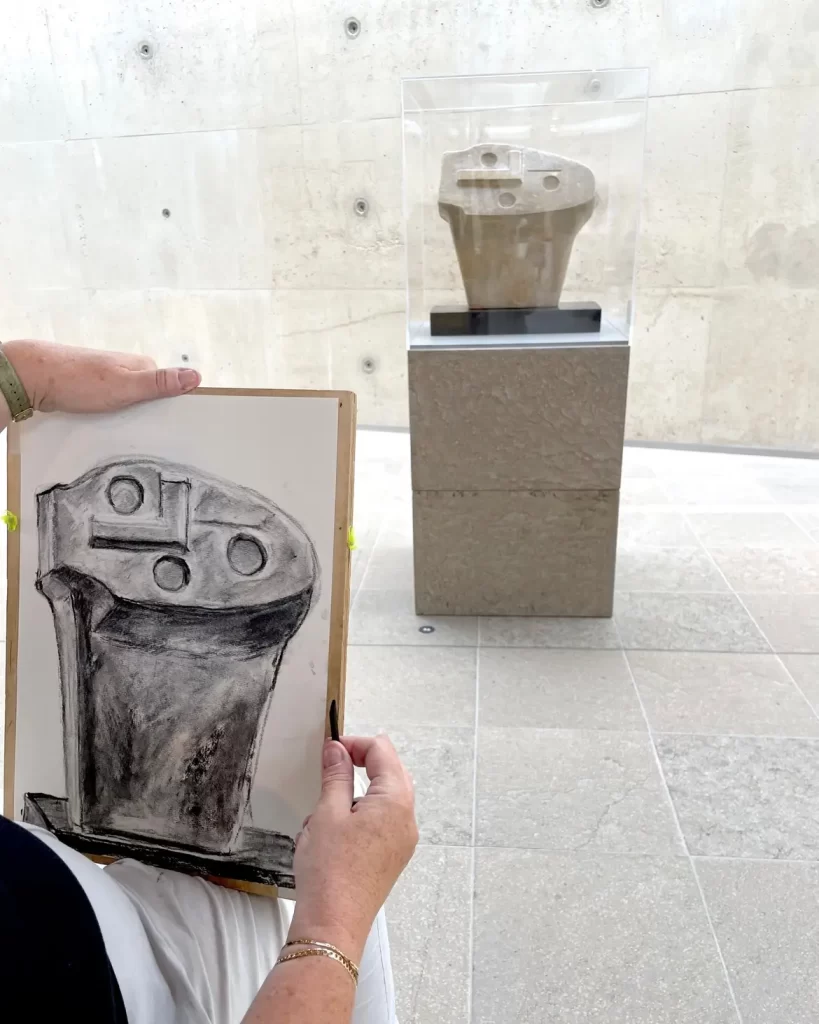Moore to Draw [Tekenen als Henry Moore]
Museum Beelden aan Zee, the Hague, July – October 2023

Beyond Traditional Learning Modalities
The inspiration for Moore to Draw arose from the desire to create the conditions for rhizomatic knowledge to develop; for new forms of knowledge production and reception to emerge between visitors and the works in Henry Moore: Vorm en Materiaal…
Traditional learning theory based on lecture and text tends to inhibit rather than promote visitors’ learning and engagement with objects. This kind of didactic, expository model understands knowledge as something which exists in dependently of the learner and learning as incremental, added bit by bit until achieved. This kind of approach also communicates information through the symbolic mode, which requires a sophisticated level of language use and abstraction by requiring an understanding how words and experience relate, and how words represent experience.
Discovery Knowledge
Through the combination visual images and hands-on engagement, Moore to Draw instructed through iconic and enactive modalities in a discovery learning-theory style where the learner is an active participant in the creation of knowledge.
By making use of these often under-utilized learning strategies, Moore to Draw reflected the wide range of learning styles which visitors embody, which correspond to their various intelligences (i.e spatial intelligence, bodily-kinesthetic intelligence).
Moore to Draw broadened the possibility for visitors with many different strengths and abilities to relate to the exhibition Henry Moore: Vorm en Materiaal.



Scholarship in Action
By positioning the experience of making art in front of art objects themselves, aesthetic and flow experiences which researchers have determined visitors have the potential to experience, was effectively doubly enhanced. Moore to Draw realized knowledge from existing scholarship which demonstrates that learning is best achieved in experiences of enjoyment.
The conceptual model of Moore to Draw was rooted in the art historical narrative of Henry Moore’s working process and his expressed relationship to sculpture. However, exploring the works found in Henry Moore: Vorm en Materiaal solely through the art historical narrative prevents interdisciplinary knowledge from arising and fails to acknowledge the reality that visitors construct their own meanings and script their own narratives when coming to the museum.
“The underground sprout of a rhizome does not have a traditional root. There is a stem there, the oldest part of which dies off while simultaneously rejuvenating itself at the tip. The rhizome’s renewal of itself proceeds autopoietically: the new relations generated via rhizomatic connections are not copies, but each and every time a new map, a cartography. A rhizome does not consist of units, but of dimensions and directions” - Inna Semetsky
Contributing to a Sketched History
By adopting museological theories of the museum as a performative site in which visitors’ subjectivities unfold, Moore to Draw was able to act as a container for a network of meanings to propagate, each one sourced from the individual visitor’s perspective. At its close, Moore to Draw [under the name Tekeningen as Moore] consistently sold out, and was adopted by the hosting museum’s educational department as a permanent offer in their exhibition programming.
